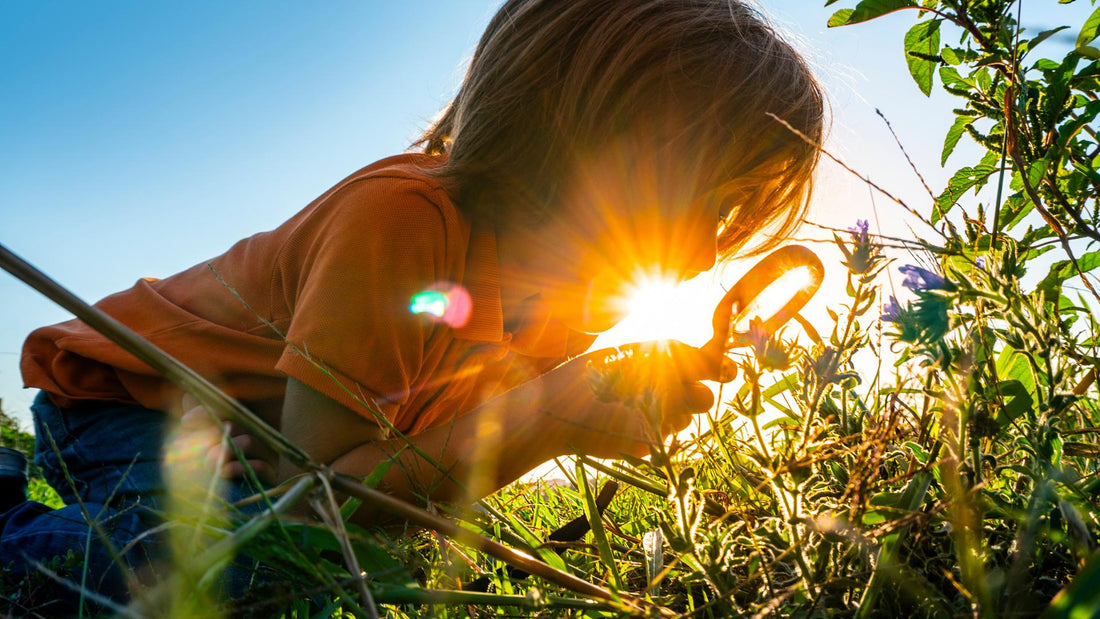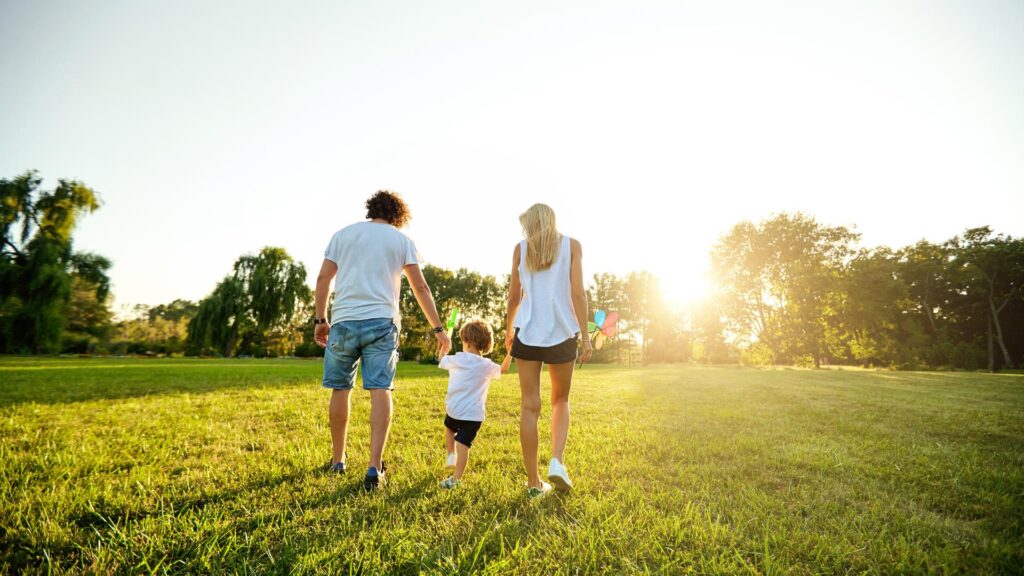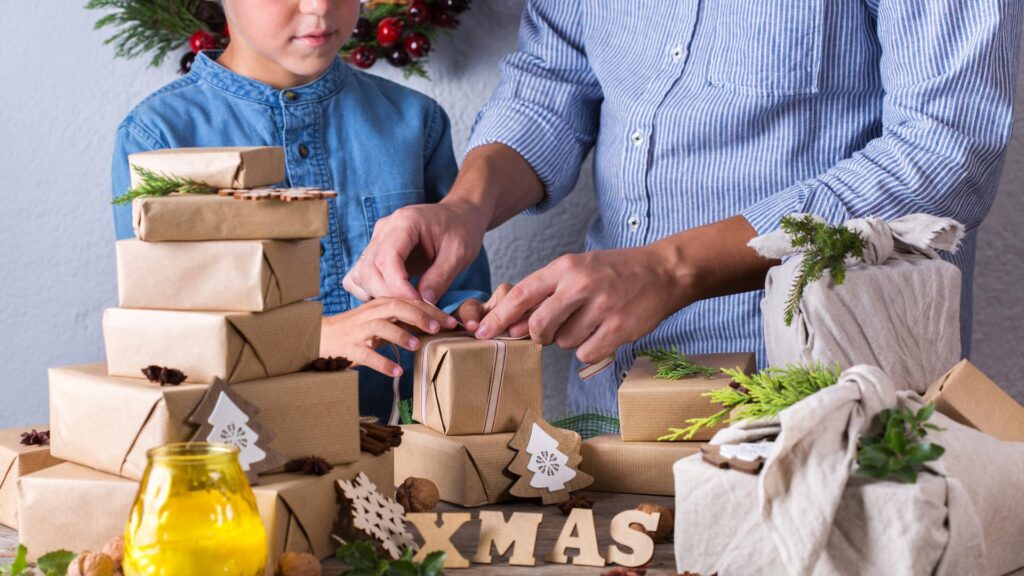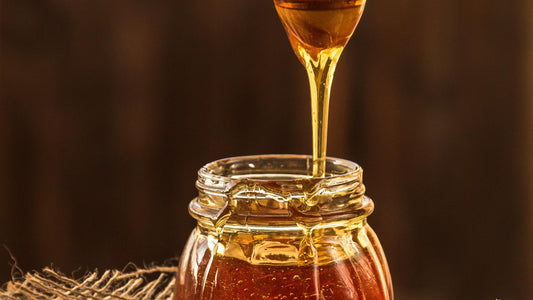
Zurück zur Schule: So schaffen Sie zu Hause ein Zentrum für Nachhaltigkeit
Aktie
Ein weiterer Sommer ist vorbei. Abgesehen von der Rückkehr zur Arbeit bedeutet der kommende September auch, dass die Schule wieder beginnt. Keine Ferien, kein Chillen zu Hause und keine Reisen mehr.
Mit dem nahenden neuen Schuljahr ist es unerlässlich, der Nachhaltigkeitsbildung für unsere Jugend Priorität einzuräumen. In einer Welt, die zunehmend von Klimawandel und Umweltzerstörung betroffen ist, ist es von größter Bedeutung, jungen Menschen Wissen und Fähigkeiten zu vermitteln, die eine nachhaltige Zukunft fördern. Indem wir Nachhaltigkeit in den Lehrplan integrieren, können wir eine Generation umweltbewusster Menschen heranbilden, die befähigt sind, fundierte Entscheidungen zu treffen und positive Veränderungen voranzutreiben.
Lassen Sie uns diesen Neuanfang begrüßen, indem wir darüber nachdenken, wie wir die Nachhaltigkeitsbildung auch für die jüngeren Generationen integrieren können.
Kinder & Nachhaltigkeitsbildung
Aus Gesprächen mit Eltern geht hervor, dass bei vielen Kindern das Umweltbewusstsein zunimmt. Motivation, Neugier und vor allem Kreativität sind eine Kombination von Charaktereigenschaften, die auf unterschiedliche Weise geweckt werden können. Kinder und Jugendliche können und sollten sich nicht nur in der Schule, sondern auch zu Hause mit Nachhaltigkeitsthemen auseinandersetzen.
Der Übergang von den Sommerferien zum neuen Schuljahr ist eine großartige Gelegenheit, mit der Entwicklung und Integration von Ideen und Aktivitäten zum Thema Nachhaltigkeit zu beginnen. Wir können einen neuen nachhaltigen Ansatz einführen, bevor das neue Jahr hektisch wird und wir in unseren Alltag verfallen. Und was wäre dafür besser geeignet, als die Voraussetzungen für umweltfreundliches Lernen zu Hause zu schaffen?
In diesem Blogbeitrag möchten wir einige Ideen und Tipps geben, wie wir unsere Familien in das Thema Nachhaltigkeit einbeziehen können. Auf diese Weise können wir Schritte unternehmen, um nachhaltige Gewohnheiten aufzubauen und neue nachhaltige und umweltfreundliche Verhaltensweisen zu fördern.
Aufbau einer grünen Stiftung
Unsere Routinen, Gewohnheiten und unser Verhalten zu ändern, ist eine komplexe Aufgabe. Es kann sicherlich entmutigend wirken, da es so viele Aspekte unseres Lebens gibt, die nachhaltiger sein könnten und sollten. Überwältigt zu sein ist angesichts all der Tipps, Produkte und Informationen, die es gibt, völlig natürlich, also gehen wir es Schritt für Schritt an.

Eine nachhaltige Wohnphilosophie entwickeln
Das Wichtigste zuerst. Wir können damit beginnen, eine nachhaltige Einstellung zu Hause zu entwickeln. Aber warten Sie. Was beinhaltet eine nachhaltige Einstellung zu Hause? Eine nachhaltige Einstellung zu Hause beinhaltet die Übernahme bewusster und umweltfreundlicher Praktiken. Diese Praktiken können die Umweltbelastung minimieren und Ressourcen in Ihrem Wohnraum schonen.
Hierzu können gehören:
- Reduzierung des Energie- und Wasserverbrauchs
- Abfallminimierung durch Recycling und Kompostierung
- Auswahl umweltfreundlicher Produkte
- Nutzung erneuerbarer Energiequellen
- Integration nachhaltiger Designprinzipien
Die Kombination der oben genannten Praktiken kann ein gesünderes und effizienteres Wohnumfeld für Sie und den Planeten schaffen. Diese nachhaltige Denkweise sollte im Haushalt gefördert werden. Eltern können kreative und dennoch einfache Wege nutzen, um ihre Kinder zu ermutigen, sich mit Nachhaltigkeitsherausforderungen auseinanderzusetzen. Mithilfe täglicher Übungen kann sich die ganze Familie auf spielerische und sinnvolle Weise mit dem Thema auseinandersetzen. Im Folgenden werden wir Möglichkeiten erkunden, wie Familien Nachhaltigkeit im Alltag umsetzen können.
Umweltfreundliches Lernen zu Hause
Sich als Familie an Nachhaltigkeitsaktivitäten zu beteiligen, kann sowohl lehrreich als auch unterhaltsam sein. Diese Aktivitäten können Wettbewerbe, Workshops, Experimente, Outdoor-Aktivitäten und Kunsthandwerk umfassen. Bevor wir uns auf einige davon stürzen, sollten wir über die Unterteilung des Haushalts nachdenken. Keine Sorge; dies ist eine einfache Technik, die der Familie helfen kann, zwischen verschiedenen Teilen des Haushalts zu unterscheiden. Sie kann Kindern helfen, besser zu verstehen, wie ein Haushalt funktioniert und welchen Zusammenhang er mit Nachhaltigkeit hat.
Nachhaltigkeitsräume einrichten
Studienraum Nachhaltigkeit
- Überlegen Sie, ob Sie in Ihrem Zuhause einen kleinen Raum einrichten können, der als Lernbereich für Ihre Kinder dienen kann. Dieser Raum kann ihr gemeinsames Büro sein, in dem sie ihre Hausaufgaben machen. Am wichtigsten ist jedoch, dass es ein spezieller Raum sein kann, in dem die Familie ein paar Stunden pro Woche zusammenkommt und alle Fragen der Nachhaltigkeit bespricht. Eltern und Kinder können gemeinsam recherchieren, diskutieren und möglicherweise kreative Lösungen für den Haushalt finden.
DIY-Recyclingstation
- Abfall ist der Elefant im Haushalt. Es ist wichtig, unseren Kindern beizubringen, weniger verschwenderisch zu sein. Da Abfall leider ein unvermeidlicher Teil unseres täglichen Lebens ist, sollten wir auch lernen und vermitteln, wie man richtig damit umgeht. Richten Sie einen ausgewiesenen Bereich für Recyclingbehälter ein und bringen Sie Ihren Kindern bei, Materialien wie Papier, Kunststoff, Glas und Metall zu trennen. Beteiligen Sie sie an der Dekoration der Behälter und machen Sie ein Spiel daraus, um herauszufinden, wer sie richtig sortieren kann.
Garten- & Kompoststationen
- Manche Kinder haben das Glück, sich in der Schule mit den Konzepten des Gärtnerns und Kompostierens auseinanderzusetzen. Aber was ist mit Erwachsenen? Wir glauben, dass dies eine wunderbare Gelegenheit für die ganze Familie ist, diese beiden Konzepte kennenzulernen und sich damit auseinanderzusetzen. Legen Sie einen kleinen Garten oder Kräutertöpfe an, um Kindern beizubringen, wie man Lebensmittel anbaut. Machen Sie sie mit dem Kompostieren vertraut, indem Sie Küchenabfälle für Kompost sammeln und ihnen zeigen, wie daraus nährstoffreicher Boden wird. Unser Blog-Artikel „ Kompostieren zu Hause: Eine Anleitung für organische Abfälle “ ist ein guter Anfang.
Holen Sie sich unsere Schritt-für-Schritt-Anleitung
Unser umfassender Green Cloud Nine-Leitfaden „Kompostieren 101“ ist Ihre ultimative Ressource, um mit dem Kompostieren zu Hause zu beginnen und es zu meistern. Egal, ob Sie einen Garten oder eine kleine Wohnung haben, wir zeigen Ihnen, wie Sie einfach und geruchsfrei kompostieren. Unser Leitfaden macht das Kompostieren zu einer einfachen, angenehmen und lohnenden Erfahrung.
Nachhaltigkeitsherausforderungen und -aktivitäten
Eine nachhaltige Denkweise zu Hause umzusetzen muss keine zusätzliche Belastung sein. Obwohl es eine steile Lern- und Verhaltenskurve gibt, bietet Nachhaltigkeit die Möglichkeit, kreativ zu sein und Spaß zu haben. Die ganze Familie kann lernen und vielleicht sogar einen gesunden Wettbewerb entfachen, indem sie sich an Nachhaltigkeitsaktivitäten beteiligt. Hier sind einige Heimaktivitäten und Herausforderungen für Familien, um Nachhaltigkeitskonzepte zu fördern.

- Energiespar-Challenge: Machen Sie einen Wettbewerb, um herauszufinden, wer die ganze Woche über am meisten daran denkt, das Licht auszuschalten, Geräte auszustecken und Energie zu sparen. Erstellen Sie ein Diagramm, um den Fortschritt zu verfolgen, und bieten Sie den Gewinnern kleine Belohnungen.
- Experiment zum Wassersparen: Messen und vergleichen Sie den Wasserverbrauch beim Zähneputzen, Geschirrspülen oder Duschen, um Kindern zu zeigen, wie viel Wasser bei verschiedenen Aktivitäten verbraucht wird.
- Upcycling-Kunstprojekte: Verwenden Sie alte Zeitschriften, Karton und andere Materialien, um Kunstprojekte zu erstellen. Bringen Sie das Konzept des Upcyclings bei, indem Sie ausrangierte Gegenstände in etwas Neues und Wertvolles verwandeln.
- Nachhaltiges Kochen: Beziehen Sie Kinder in die Essensplanung und -zubereitung ein und achten Sie dabei auf die Verwendung regionaler, saisonaler Zutaten und die Reduzierung von Lebensmittelabfällen.
- Umweltfreundliches Basteln: Entdecken Sie kreatives Basteln mit natürlichen und nachhaltigen Materialien wie Holz, Stoff und Recyclingpapier. Basteln Sie Dinge wie Vogelhäuschen, selbstgemachte Kerzen oder wiederverwendbare Stoffbeutel.
Denken Sie daran, dass es darauf ankommt, diese Aktivitäten spannend und altersgerecht zu gestalten und sie auf die Interessen und Werte Ihrer Familie abzustimmen. Indem Sie die ganze Familie einbeziehen, fördern Sie ein Verantwortungsbewusstsein und eine Wertschätzung für die Umwelt und verbringen gleichzeitig wertvolle gemeinsame Zeit.
Legen Sie Ihre Nachhaltigkeitsziele fest
Die Rückkehr aus der Sommerpause markiert jedes Jahr den Beginn einer neuen Jahreszeit. Es ist eine großartige Möglichkeit, unsere gebündelte Energie zu nutzen, um unseren Alltag nachhaltiger zu gestalten. Die Anerkennung der Bedeutung von Nachhaltigkeit kann der Anfang sein, unsere Häuser in Nachhaltigkeitszentren zu verwandeln. Die ganze Familie darüber aufzuklären, wie der Haushalt funktioniert und wie er zu einer nachhaltigen Zukunft beitragen kann, ist eine großartige Möglichkeit, jüngeren Generationen den Willen zu vermitteln, ihre Entscheidungen bewusster zu treffen. Lassen Sie uns Nachhaltigkeit zu einer unterhaltsamen Aktivität und Herausforderung machen, die uns helfen kann, als Familie zu wachsen.
Wir haben die Fähigkeit, neue Gewohnheiten und Verhaltensweisen zu entwickeln, die in eine nachhaltige Denkweise eingebettet sind. Die Rückkehr in die Schule ist nicht nur für die Kleinen in unserer Familie, sondern auch für uns Erwachsene. Seien Sie neugierig, seien Sie kreativ, entdecken Sie Ihr inneres Kind und gemeinsam können Sie ein Gleichgewicht in Ihre Haushaltsaktivitäten bringen und sich um Ihre Familie und die Umwelt kümmern.

Artikel von Alexis Damdimopoulos. Kurz gesagt, ich bin süchtig nach der Natur. Ich interessiere mich leidenschaftlich für alles, was mit Lebensmitteln zu tun hat, von ihrer Produktion bis hin zur ethischen Einstellung, sie nicht zu verschwenden. Ich glaube an eine nachhaltige, ethische und zirkuläre Denkweise. Treffen wir uns im GC9-Blog!




